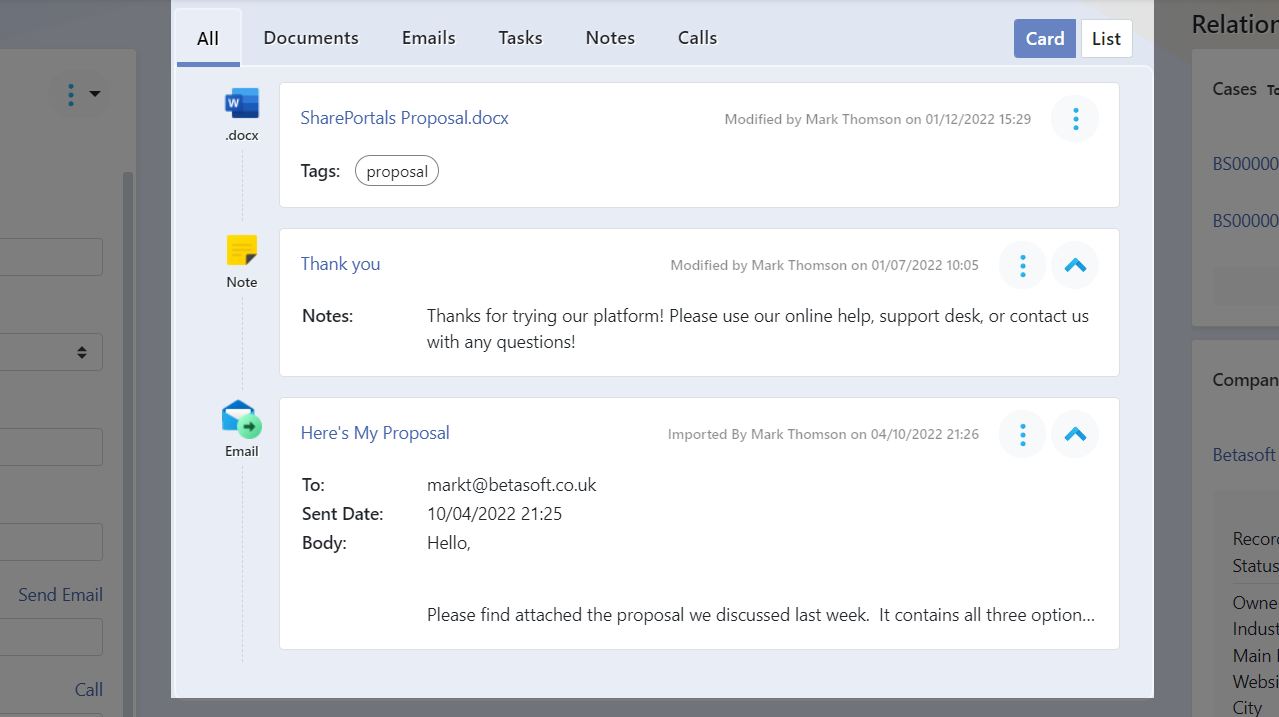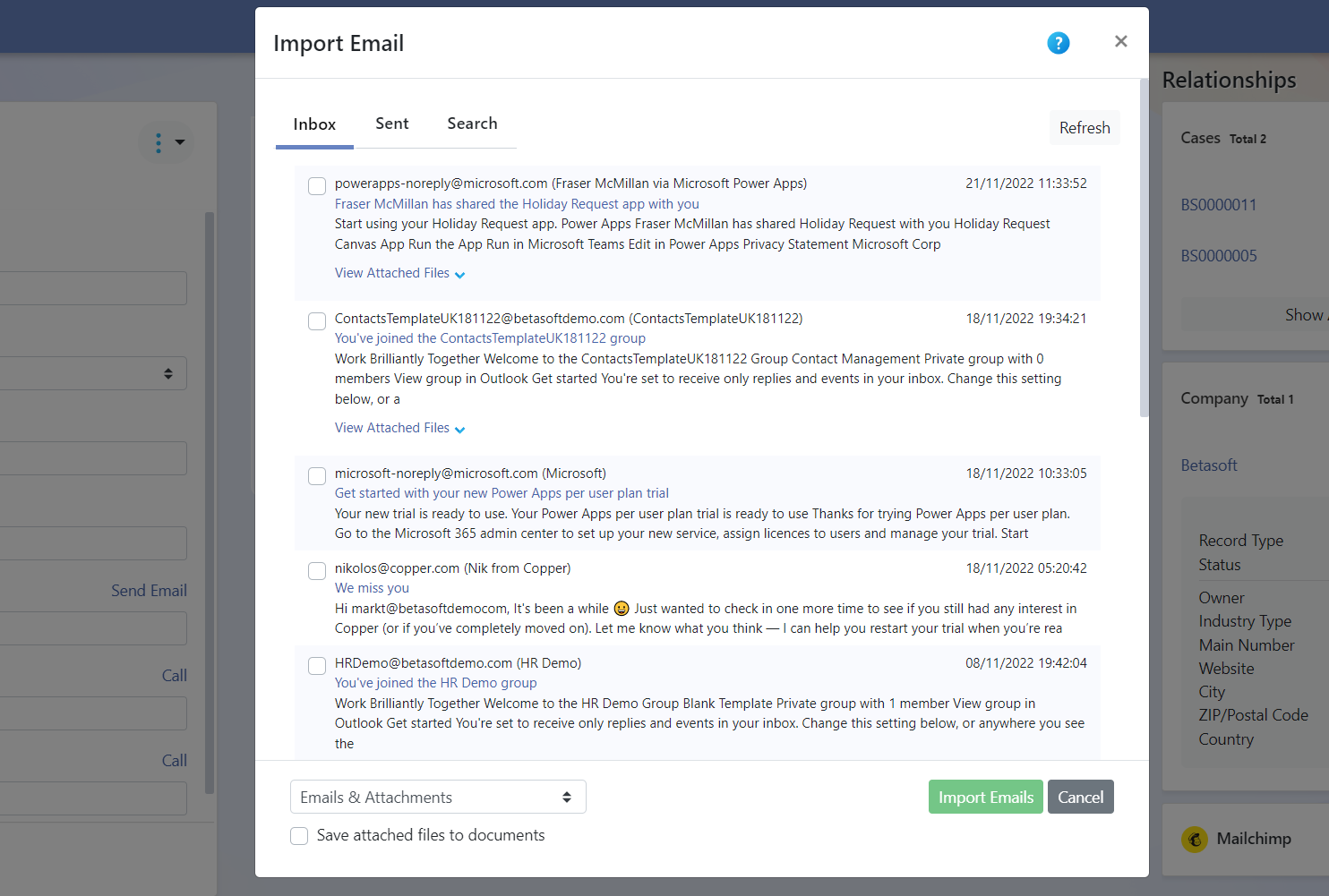Create Information Structure
Define a collection of Fields as Record Types, and manage thousands or millions of them.
Keeping your data and documents secured in your Microsoft 365 tenant means using Microsoft’s SharePoint platform which has the OneDrive experience for personal usage, and the Teams or SharePoint web experience for collaboration.
In addition to access on any device, anywhere, using one of those interfaces gives you many other benefits:
Teams and SharePoint aren’t the complete solution though. Challenges which still exist within the Microsoft 365 platform are:
“We still use Spreadsheets to track activities, and link files”
“There’s too many Teams making it difficult to find things”
“Governance on Teams is causing delays and frustration”
“Routing and storing emails isn’t quick and easy”
“There’s no ‘system’ around the collaboration to manage process”
“Users find SharePoint confusing, and it needs a lot of customisation”
Define a collection of Fields as Record Types, and manage thousands or millions of them.

Intuitively manage standard record content, such as documents, emails, calls, notes, or custom items.

Link types of Records together using ‘1 to Many’ or ‘Many to Many’ relationships. For example, 1 company could be linked to many contacts. Many cases could be linked to many contacts.

Manage each stage of a Records business process lifecycle with conditions, workflows, and fields.

Import emails from your Microsoft 365 mailbox into a record with no hassle.

Manage contacts and related records within Outlook, and easily route email messages or file attachments to be stored within a record.

